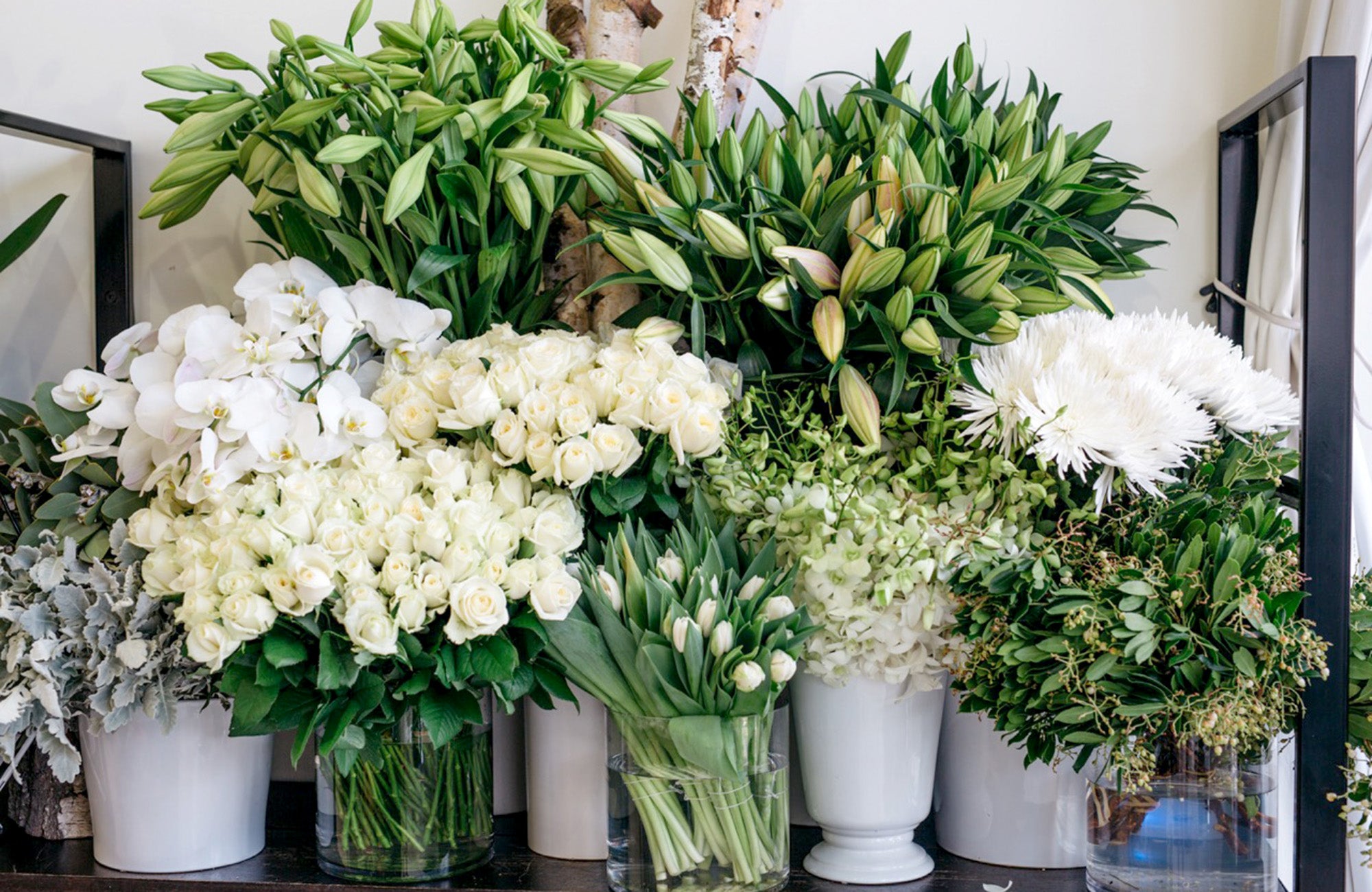Flowers are a universal means of communication, able to transcend language to convey love, peace, happiness, friendship, and even mourning.
Throughout history, some flowers have cemented themselves as especially important fixtures in our homes and gardens, whether because of their beautiful appearance or the meaning behind them. Below, we will take a deeper look at the most popular flowers in the world and explain why they have risen to such prestige.
Roses

Few other flowers rival the rose in popularity and fame. Roses are a symbol of love, and thus they are commonly given as romantic gifts when someone wants to tell a partner or potential suitor, “I love you.” For this reason, roses are commonly found in wedding bouquets.
Not only are roses beautiful and symbolic, but they also emit a lovely aroma, making them ideal to display both in your home as cut flowers and in your garden. They also come in multiple colours, each of which symbolises something different. Red flowers are the most iconic, symbolising passionate love, whereas white roses indicate purity, pink roses indicate happiness, and yellow roses indicate friendship.
Tulips

In the seventeenth century, tulips were considered such a valuable commodity in the Netherlands that some were selling for more than a house during a period now known as Tulip mania. And while that ancient economic bubble has long since collapsed, tulips are still revered around the world for their cheerfulness, grace, and beautiful colours.
Tulips are perennial flowers, and each year they usher in the springtime, symbolising love, hope, and happiness. They not only look beautiful in gardens, but also make magnificent cut flowers, either on their own or in a floral arrangement.
In Australia, tulips are a favourite flower during the autumn and winter months.
Carnations

Carnations are one of the oldest flowers in the world, originating in Eurasia where they were first cultivated 2,000 years ago. Their popularity has persisted until this day, as their rich colour, symbolism, and long lifespan as a cut flower has turned them into a staple in prom boutonnieres and bouquets.
Carnations come in many different colours, with red, white, and pink being the most popular. Pink carnations are a symbol of motherly love and are therefore a fixture in Mother’s Day bouquets. Dark red carnations indicate deep, passionate love, and white carnations express devotion and wishes for good luck. These herbaceous perennials can grow over a metre tall, and they are second only to roses as the most popular cut flowers.
Carnations have made a come back from their popularity in the 1980's with some interesting new varieties.
Gerberas

With their assortment of bright colours and large disc-shaped flowers, gerbera daisies are beloved by florists and rank among the most popular cut flowers in the world. Gerberas are especially unique in that different varieties differ greatly in size, their flowers ranging from 7 cm to 12.7 cm in diameter. Combining these different sizes in bouquets and other floral arrangements makes for great texture.
Gerberas come in white, orange, red, pink, and yellow, and some flowers are even multi-coloured. Considered “happy flowers,” gerberas are often found in birthday, anniversary, and congratulatory bouquets.
Gerberas were a favourite flower in the 90's and are in the process of making a trend comeback.
Daisies

With more than 32,000 different species of daisy, they are one of the most common flowers in the world and are an irreplaceable fixture in gardens and floral arrangements alike. Though simple in appearance, they are strikingly beautiful in design and communicate happiness and exuberance.
The most well-known species of daisy is the Bellis perennis in the Asteraceae family, also known as the common daisy. These perennial flowers have a bright yellow centre surrounded by thin, white petals. Remarkably hardy and easy to grow, daisies can blossom just about anywhere with minimal maintenance. As cut flowers, they have a long vase life, and their traditional appearance compliments any home.
Daffodils

A bright yellow beacon of spring that crops up each year at the end of the cold, dark winter, daffodils are considered the most popular spring flower in the world. Also known as Narcissus, daffodils have a long history dating back to the 11th century BCE, when they were first mentioned in literature by the ancient Greek poet Homer. Since then, they have come to symbolise remembrance and unrequited love.
While there is hardly anything as cheerful as witnessing the first daffodils emerge in nature each spring, they also look beautiful in vases and bouquets, where they continue to spread cheer.
Orchids

Orchids are one of the most elegant flowers in the world, with more than 28,000 different species in the family Orchidaceae. These exotic flowers emanate a mystique that has helped garner their worldwide fascination, but one of the most attractive features of orchids is their long bloom time and low maintenance.
Orchids can bloom for three months indoors, and they require very little maintenance other than watering once a week. They will often even rebloom. Furthermore, they are inexpensive and easy to obtain, making them a popular choice between devoted flower enthusiasts and amateur growers alike.
Lilies

A classic and timeless flower, lilies are one of the top-selling cut flowers in the world, with millions sold on special occasions each year such as Mother’s Day. Lilies come in multiple colours, such as white, yellow, red, pink, and orange, and they have a rich history dating back to Ancient Greece.
In Greek Mythology, the lily is known as the flower of purity, motherhood, and abundance. During the Victorian era, it was the flower of royalty, even inspiring the legendary fleur de lis. Now, they are popular in gardens and floral arrangements around the world, and they enjoy a long vase life.
Conclusion
Nothing is able to communicate love and admiration as effectively as a flower, and with rich meanings behind them, each flower on this list has cemented itself as a universal symbol. Whether being admired in their natural state in a garden or as a cut flower in a vase or bouquet, these flowers beautify our homes, landscapes, and special events, and they are sure to persist as the most popular flowers in the world for many more millennium.
Kate x





